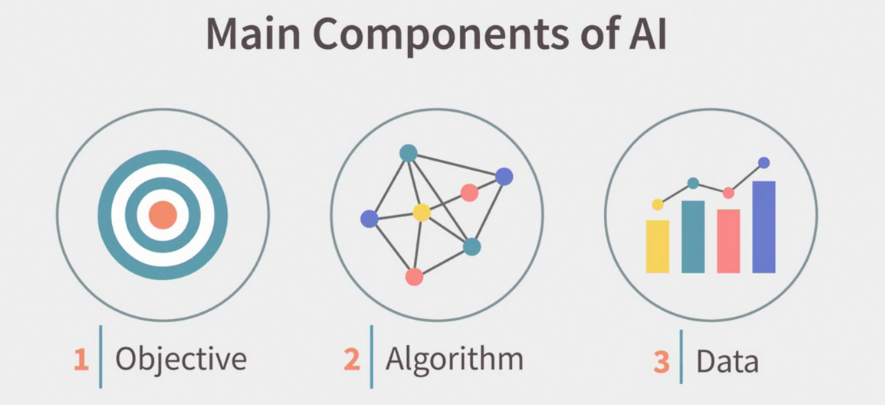A Guide for AI-First Product Leaders

Digital & Technology
12 week ago — 7 min read
In today's rapidly evolving landscape, AI (Artificial Intelligence) isn't just a buzzword—it's the driving force behind transformative innovation. As a product leader, understanding and harnessing the power of AI is essential to steer your team towards success.
The AI-First Mindset
The journey to becoming an AI-first product leader begins with a mindset shift. AI is at the heart of modern products, and as such, it should be at the core of your strategic thinking. Embracing AI-first means recognizing that AI fundamentally changes how we approach product development, from ideation to execution.
AI Use Cases: Beyond the Hype
When we think of AI, our minds often jump to futuristic scenarios like self-driving cars. However, AI's real-world applications are far more widespread and practical. From personalized advertising and e-commerce to spell checkers and movie recommendations, AI is already enhancing our daily experiences subtly yet significantly.
Understanding the AI "Blackbox": Objective, Algorithm, and Data
As a product leader, it's essential to understand the core components that make AI systems work. These components are the objective, the algorithm, and the data. Let's delve into each of these to understand how they contribute to the functionality of AI within products.

1. The AI Objective
The objective is the cornerstone of any AI system. It defines what you want your AI to achieve. As a product leader, setting the right objective for your algorithm is the most crucial step. It's also the most challenging because your chosen objective directly influences the direction and outcome of your AI's learning process.
For instance, consider an ad algorithm. Its primary objective is to display ads that are relevant to the user. However, oversimplifying the aim to just 'relevance' can lead to unintended consequences, such as ads that feel too invasive or 'creepy' to the user. Therefore, defining your AI objective carefully is vital, considering both the desired outcome and potential side effects[1].
2. The AI Algorithms
Once the objective is set, the next step is to select the appropriate algorithm for your AI to learn and function. There are several AI algorithms, and choosing the right one depends on your specific use case. The main types of machine learning algorithms are supervised learning, unsupervised learning, and reinforcement learning.
- Supervised Learning: Best for scenarios where you can classify data into specific labels, like sorting emails into 'spam' or 'not spam.'
- Unsupervised Learning: Useful when you don't have predefined labels and need the algorithm to identify patterns, such as clustering similar customer behaviours.
- Reinforcement Learning: Ideal for situations where the algorithm learns through trial and error, like in robotics or self-driving cars.
As a product leader, you may not be selecting the algorithm yourself, but understanding these types can help you communicate effectively with your engineering team and contribute to strategic decisions about the algorithm's features and constraints.
3. The Data that Powers AI
Data is the fuel for your AI algorithm. It's what brings your AI to life. The more data you have and the higher the quality, the better your algorithm will perform. AI learns from examples, which can be past or real-time data, to identify patterns and make decisions.
For example, Netflix's AI uses data about movies you've watched, your ratings, and the viewing habits of similar users to suggest new content. This reliance on data means that the quality of your AI's performance is only as good as the data it receives. Therefore, as a product leader, ensuring the collection of high-quality, relevant data is critical to your role.
Actionable Steps
- Define Clear Objectives: Spend time thoughtfully defining the AI's objectives. Consider long-term impacts and potential unintended consequences.
- Understand Algorithms: Familiarize yourself with different types of algorithms and their use cases. This knowledge will help you make informed decisions about the AI components of your product.
- Prioritize Quality Data: Focus on collecting and using high-quality data. Avoid 'garbage in, garbage out' scenarios by ensuring the data is relevant, unbiased, and representative.
By grasping these three fundamental components of AI, you'll be better equipped to lead AI-driven product development and ensure that your products meet and exceed user expectations.
Developing AI Product Principles
AI requires a new set of product principles. As a product leader, you must be willing to unlearn some traditional approaches and adopt new strategies that align with AI's unique characteristics. This includes recognizing that you don't control the AI experience and that quality data collection is paramount for building successful AI-powered products.
The Future of AI in Product Leadership
Looking ahead, the evolution of AI will continue to impact product leadership. The automation of AI components, ethical considerations, and the continuous advancement of AI technologies will shape the future of product development. As a product leader, staying informed and adaptable is key to navigating these changes.
Next Steps for Aspiring AI-First Product Leaders
Continuous learning is vital to thrive as an AI-first product leader. Deepen your understanding of AI, reflect on the role AI plays in the products you use, and engage with the community to share insights and learn from others. The path to AI mastery is ongoing, and your growth as a leader depends on your willingness to embrace this transformative technology.
Conclusion
The transition to an AI-first product leader is not just about technical know-how; it's about cultivating a forward-thinking mindset that recognizes AI's transformative power. By understanding AI's fundamentals, developing new product principles, and preparing for the future, you can lead your team and products to new heights in the AI era. This article is based on the LinkedIn Learning course "Becoming an AI-First Product Leader" by Tomer Cohen.
For more insights, watch the below webinar recordings on leveraging AI for business growth.
Understand the Role of AI in Customer Acquisition & Engagement
How to Use AI Tools to Power Your Business Growth
Image source: Canva
Disclaimer: The views and opinions expressed in this article are those of the author and do not necessarily reflect the views, official policy or position of GlobalLinker.
View Manoj 's profile
SME Inspirations
Most read this week















Comments
Please login or Register to join the discussion